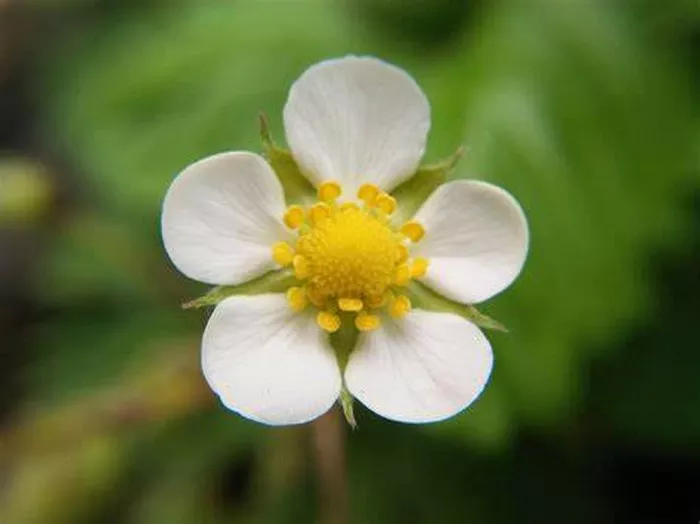Strawberry plants are beloved by gardeners for their sweet, juicy fruit and relatively easy cultivation. However, when these plants fail to produce flowers, frustration can set in. Flowering is a crucial stage in the strawberry plant’s life cycle, as it precedes fruit formation. Several factors can contribute to a lack of flowering in strawberry plants, ranging from environmental conditions to cultural practices and even genetic predispositions. In this article, we will delve into the various reasons why your strawberry plant may not be flowering and explore potential solutions to encourage blooming and fruiting.
1. Insufficient Light
One of the primary reasons why strawberry plants may fail to flower is inadequate light exposure. Like most fruit-bearing plants, strawberries require ample sunlight to initiate and sustain flowering. Insufficient light can disrupt the plant’s hormonal balance, hindering the development of flower buds.
Solution: Ensure that your strawberry plants receive at least 6 to 8 hours of direct sunlight per day. If grown indoors, consider placing them near a south-facing window or supplementing with grow lights to provide adequate light intensity.
2. Improper Temperature
Temperature fluctuations can significantly impact the flowering process in strawberry plants. These plants thrive in moderate temperatures, and extremes, whether too hot or too cold, can impede flowering. Additionally, fluctuations in temperature between day and night can disrupt the plant’s internal clock, affecting its ability to produce flowers.
Solution: Maintain a consistent temperature range of 60 to 80°F (15 to 27°C) during the day and slightly cooler temperatures at night. Use row covers or mulch to protect plants from temperature extremes and sudden fluctuations.
3. Nutrient Deficiencies
Nutrient deficiencies, particularly in essential macronutrients like nitrogen, phosphorus, and potassium, can stunt plant growth and inhibit flowering. Without an adequate supply of nutrients, strawberry plants prioritize survival over reproductive functions, leading to reduced flower production.
Solution: Conduct a soil test to assess nutrient levels and adjust fertilization accordingly. Incorporate a balanced fertilizer or organic amendments rich in nitrogen, phosphorus, and potassium to promote healthy growth and flowering.
4. Overcrowding
Overcrowding within planting beds or containers can restrict airflow and light penetration, creating unfavorable conditions for flowering and fruiting. Dense foliage can also lead to increased competition for nutrients and water among plants, further limiting their reproductive capacity.
Solution: Space strawberry plants at least 12 to 18 inches apart in rows or containers to allow for adequate air circulation and light exposure. Regularly thin overcrowded areas to promote healthier growth and flowering.
5. Improper Pruning
Pruning plays a vital role in shaping the growth habit of strawberry plants and optimizing fruit production. However, improper pruning techniques, such as excessive removal of foliage or cutting off flower buds, can hinder flowering and reduce yield potential.
Solution: Learn proper pruning techniques for strawberry plants, including the removal of old or diseased foliage and runners. Avoid cutting off flower buds, and instead focus on maintaining a balanced canopy to encourage flowering.
6. Water Stress
Inconsistent watering practices, such as drought stress or overwatering, can disrupt the delicate balance of moisture within strawberry plants. Water stress can trigger physiological responses that prioritize survival over reproduction, leading to a delay or cessation of flowering.
Solution: Maintain consistent soil moisture levels by watering strawberry plants deeply and evenly, allowing the soil to dry slightly between waterings. Use mulch to retain moisture and reduce water evaporation from the soil surface.
7. Pests and Diseases
Pests and diseases can wreak havoc on strawberry plants, causing damage to foliage, roots, and reproductive structures. Infestations by pests like aphids, spider mites, or strawberry crown moth larvae can directly impact flowering by feeding on plant tissues or transmitting diseases.
Solution: Monitor plants regularly for signs of pest infestation or disease symptoms, such as wilting, discoloration, or stunted growth. Implement integrated pest management strategies, including cultural controls, biological controls, and targeted pesticide applications, to manage pest and disease pressures effectively.
8. Varietal Characteristics
Not all strawberry varieties are created equal when it comes to flowering behavior and fruit production. Some cultivars may naturally exhibit delayed flowering or lower flower induction rates due to genetic factors or breeding objectives focused on other traits, such as disease resistance or fruit size.
Solution: Choose strawberry varieties known for their prolific flowering and fruiting habits, such as June-bearing or everbearing types. Research varietal characteristics and select cultivars suited to your growing conditions and desired harvest schedule.
Conclusion
The lack of flowering in strawberry plants can be attributed to a combination of environmental, cultural, and genetic factors. By understanding the underlying causes and implementing targeted solutions, gardeners can encourage healthy flowering and maximize fruit production in their strawberry patches or containers. Whether it’s adjusting light exposure, addressing nutrient deficiencies, or managing pests and diseases, proactive management practices can help ensure a bountiful harvest of sweet, succulent strawberries year after year.


